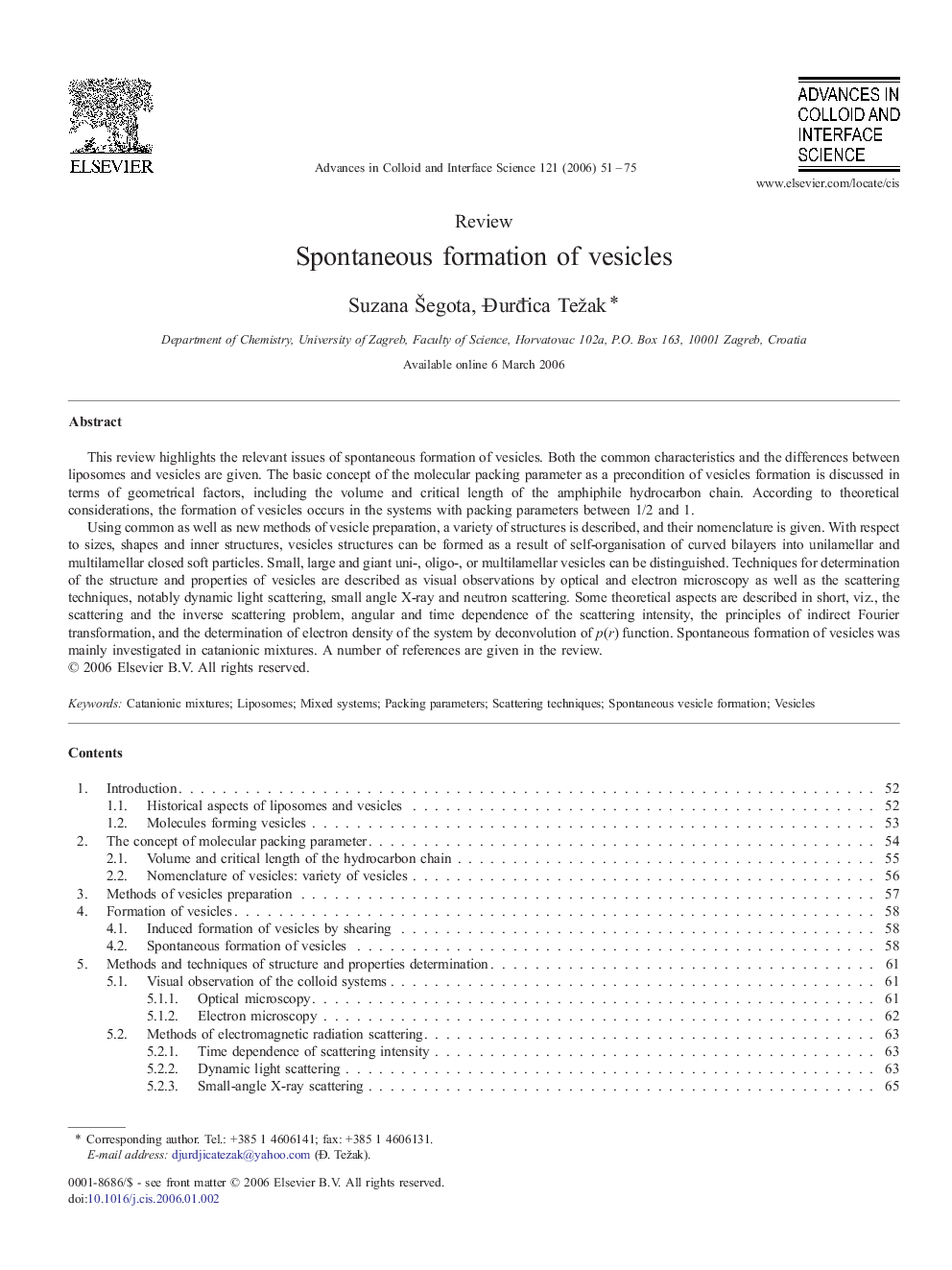| Article ID | Journal | Published Year | Pages | File Type |
|---|---|---|---|---|
| 591363 | Advances in Colloid and Interface Science | 2006 | 25 Pages |
This review highlights the relevant issues of spontaneous formation of vesicles. Both the common characteristics and the differences between liposomes and vesicles are given. The basic concept of the molecular packing parameter as a precondition of vesicles formation is discussed in terms of geometrical factors, including the volume and critical length of the amphiphile hydrocarbon chain. According to theoretical considerations, the formation of vesicles occurs in the systems with packing parameters between 1/2 and 1.Using common as well as new methods of vesicle preparation, a variety of structures is described, and their nomenclature is given. With respect to sizes, shapes and inner structures, vesicles structures can be formed as a result of self-organisation of curved bilayers into unilamellar and multilamellar closed soft particles. Small, large and giant uni-, oligo-, or multilamellar vesicles can be distinguished. Techniques for determination of the structure and properties of vesicles are described as visual observations by optical and electron microscopy as well as the scattering techniques, notably dynamic light scattering, small angle X-ray and neutron scattering. Some theoretical aspects are described in short, viz., the scattering and the inverse scattering problem, angular and time dependence of the scattering intensity, the principles of indirect Fourier transformation, and the determination of electron density of the system by deconvolution of p(r) function. Spontaneous formation of vesicles was mainly investigated in catanionic mixtures. A number of references are given in the review.
